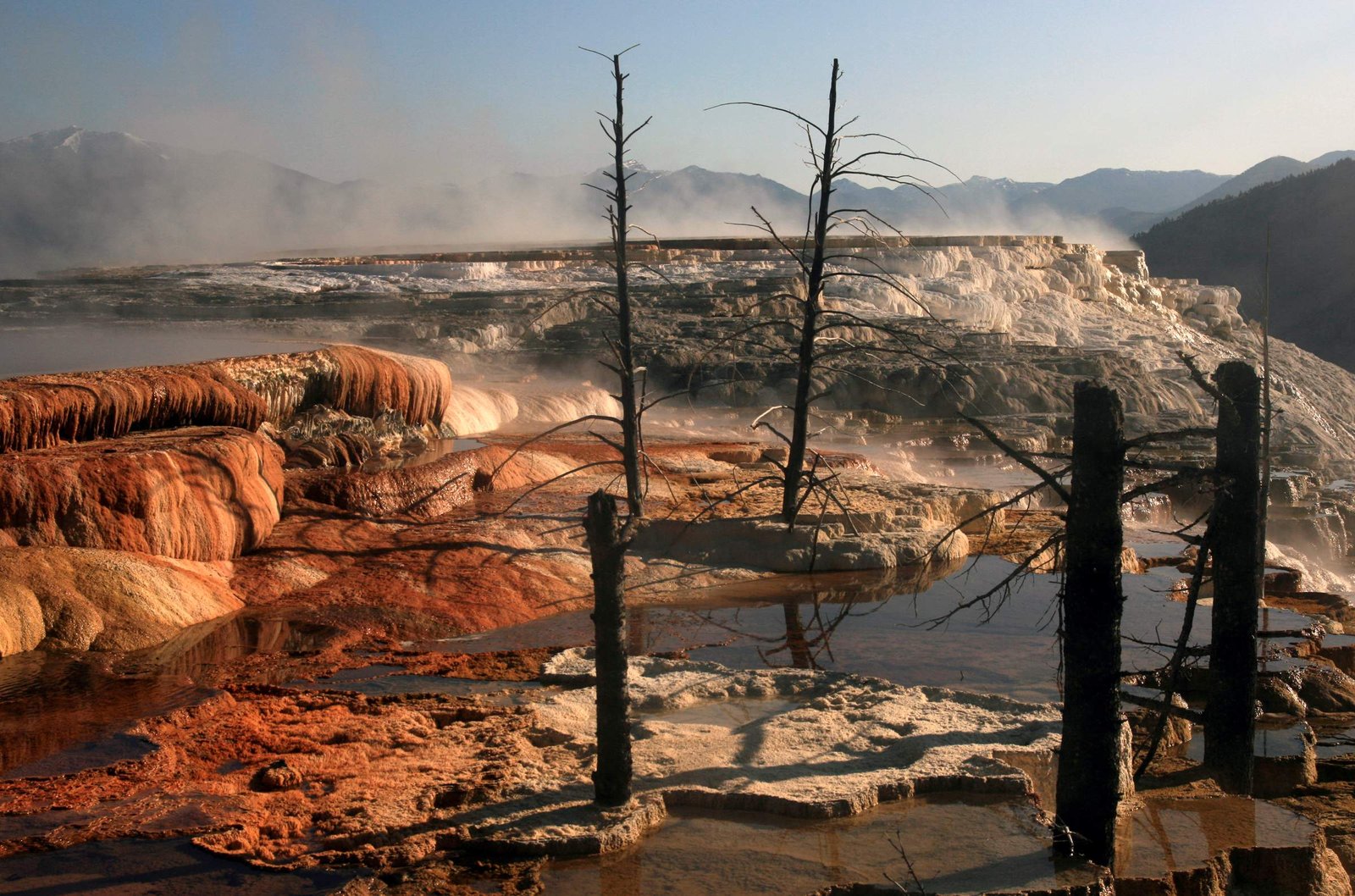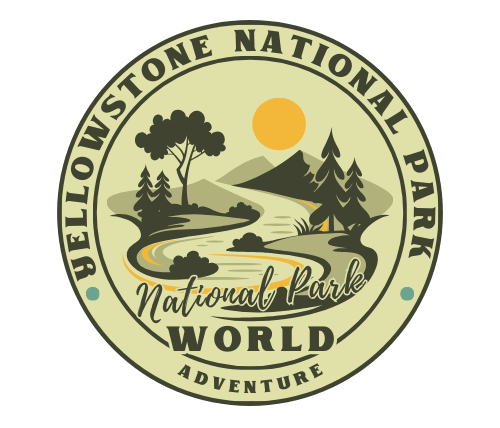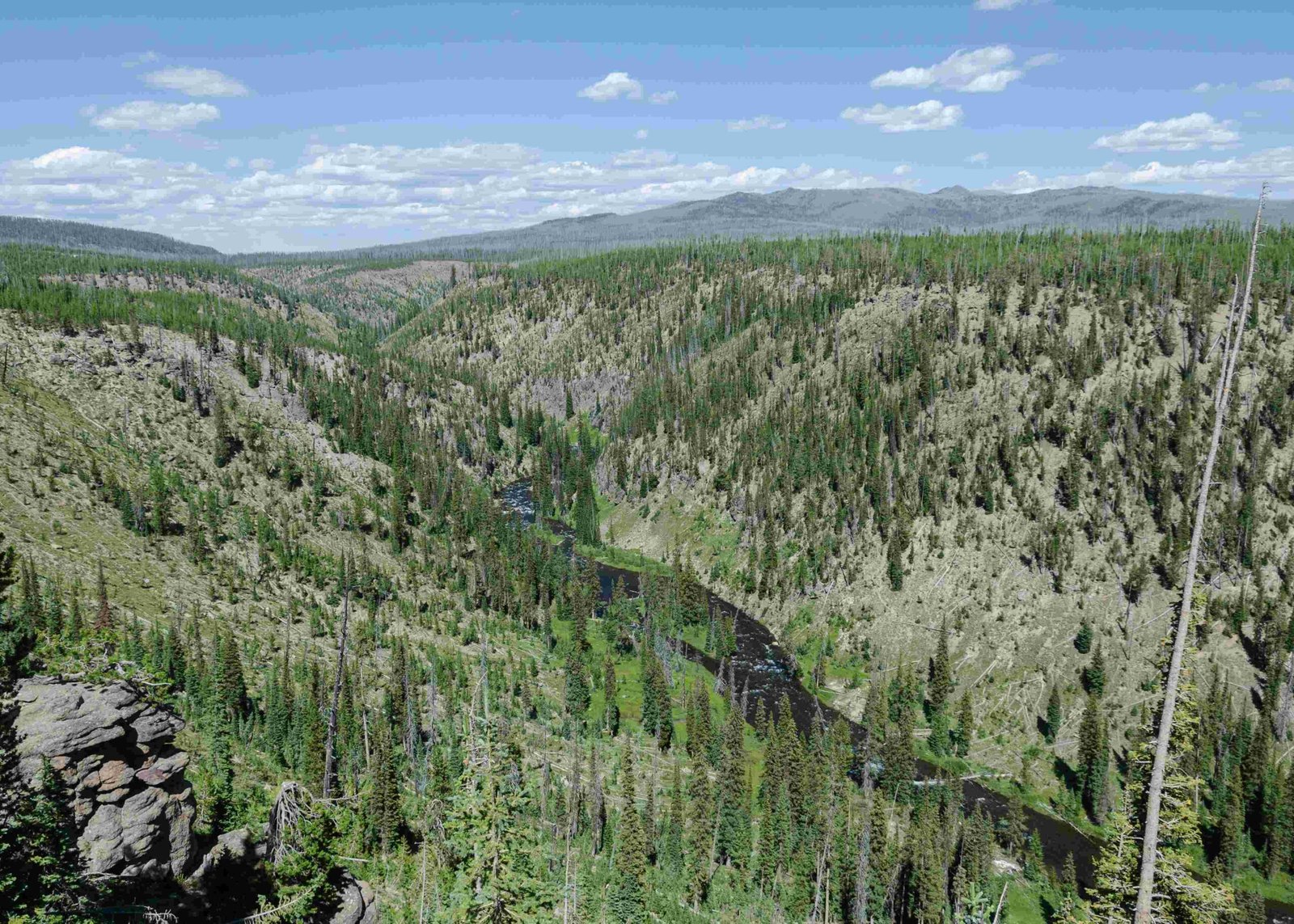Yellowstone National Park experiences seasonal road closures, particularly during the winter months. As of November 1, 2024, most roads within the park are closed to regular vehicle traffic. The West, South, and East entrances are inaccessible, while only the road from the North Entrance to the Northeast Entrance remains open year-round. These closures significantly impact park accessibility and visitor planning. This article provides comprehensive information on current road closures, alternative routes, and tips for navigating Yellowstone during closure periods.
What Are the Current Road Closures in Yellowstone National Park?

As of November 1, 2024, the following road closures are in effect:
- West, South, and East entrances are closed to regular vehicle traffic
- Nearly all internal park roads are closed to regular vehicles
- The only open road is from the North Entrance (Gardiner, Montana) to the Northeast Entrance (Cooke City/Silver Gate, Montana), passing through:
- Mammoth Hot Springs
- Tower Junction
- Lamar Valley
This single open road provides limited access to certain areas of the park during the winter season.
How Can Visitors Access the Latest Yellowstone Road Closure Updates?

Staying informed about road conditions is crucial for planning a visit to Yellowstone. Here are the best ways to access up-to-date information:
- Call the 24-hour Current Road Report Hotline: (307) 344-2117
- Visit the official Yellowstone National Park website for live road status maps and updates
- Sign up for mobile alerts by texting “82190” to 888-777
These resources provide real-time information on road closures, weather conditions, and any temporary changes to park access.
Where Can I Find a Detailed Yellowstone Park Road Closure Map?
For visual representation of road closures and current conditions:
- Check the live road status map on the Yellowstone National Park website
- Green roads: Open to auto travel
- Red roads: Closed to traffic
- Utilize the park’s road status resources for real-time updates
These tools are invaluable for planning routes and understanding which areas of the park are accessible during your visit.
What Challenges and Accessibility Issues Should Visitors Be Aware Of?
Visitors should be prepared for several challenges during periods of road closures:
- Weather Conditions:
- Sudden closures due to inclement weather
-
Dangerous driving conditions on open roads
-
Limited Services:
- Reduced amenities during fall and winter months
-
Fewer lodging and dining options available
-
Flexible Travel Plans:
- Necessity to adapt itineraries to changing conditions
-
Possible last-minute route alterations
-
Vehicle Requirements:
- Snow tires or chains may be necessary for winter travel on open roads
| Challenge | Impact | Visitor Action |
|---|---|---|
| Weather Conditions | Sudden road closures | Check forecasts regularly |
| Limited Services | Reduced amenities | Plan for self-sufficiency |
| Flexible Travel Plans | Itinerary changes | Have backup plans ready |
| Vehicle Requirements | Special equipment needed | Prepare vehicle for winter conditions |
What Are the Alternatives for Navigating Closures in Yellowstone?
Despite road closures, there are still ways to explore Yellowstone:
- Oversnow Travel:
- Starting December 15, roads open to commercially-guided snowmobiles and snowcoaches
-
Provides unique winter experience of the park
-
Open Road Access:
- Utilize the road between North and Northeast Entrances
-
Explore areas like Mammoth Hot Springs and Lamar Valley
-
Guided Tours:
- Join authorized winter tours that can access closed areas
- Experience the park’s winter beauty with expert guidance
How Do Scheduled Events and Activities Adapt to Road Closures?
Road closures significantly impact park activities:
- Winter Season Preparation:
- Roads close to prepare for snowmobile and snowcoach travel
-
Transition period between fall and winter activities
-
Parking and Transportation:
- Limited options during winter months
-
Visitors must plan accordingly and check facility operating dates
-
Winter Activities:
- Shift to snow-based activities like cross-country skiing and snowshoeing
- Special winter wildlife viewing opportunities in accessible areas
What Should Visitors Know About Planning a Trip During Road Closure Periods?
Planning a trip to Yellowstone during road closures requires careful consideration:
- Accommodation:
- Limited in-park lodging options
-
Consider staying in gateway communities
-
Activities:
- Focus on winter-specific experiences
-
Book guided tours in advance for oversnow travel
-
Safety:
- Prepare for extreme weather conditions
-
Carry emergency supplies and winter gear
-
Timing:
- Check park schedules for facility and service opening dates
-
Plan visits around available activities and accessible areas
-
Transportation:
- Rent appropriate vehicles for winter conditions
- Consider using park-approved tour operators for transportation
By understanding these factors, visitors can make the most of their Yellowstone experience, even during periods of road closures.
How Does Yellowstone’s Wildlife Viewing Change During Road Closures?
Road closures in Yellowstone create unique wildlife viewing opportunities:
- Concentrated Wildlife:
- Animals often gather in lower elevations near open roads
-
Increased chances of spotting wolves and bison in Lamar Valley
-
Reduced Human Presence:
- Less traffic allows for more natural animal behavior
-
Potential for rare sightings in quieter park areas
-
Guided Wildlife Tours:
- Expert-led excursions focus on winter wildlife habits
- Opportunities to learn about animal adaptations to harsh conditions
Visitors should always maintain safe distances and follow park guidelines for wildlife viewing, especially in winter conditions when animals may be under stress.
What Are the Long-Term Plans for Managing Yellowstone’s Road Closures?
Yellowstone National Park continually evaluates its road management strategies:
- Climate Change Considerations:
- Monitoring impact of changing weather patterns on road conditions
-
Potential adjustments to closure schedules based on long-term climate trends
-
Infrastructure Improvements:
- Ongoing projects to enhance road resilience to extreme weather
-
Exploration of new technologies for winter road maintenance
-
Visitor Experience Enhancement:
- Development of alternative transportation options during closure periods
-
Expansion of winter activity offerings to utilize closed road areas
-
Environmental Protection:
- Balancing accessibility with preservation of park ecosystems
- Studies on the impact of road closures on wildlife and habitat recovery
These long-term strategies aim to improve visitor access while protecting Yellowstone’s natural resources and adapting to environmental changes.
By understanding the complexities of road closures in Yellowstone National Park, visitors can better plan their trips, ensure safety, and fully appreciate the unique experiences offered during different seasons. Whether exploring the park’s winter wonderland or navigating the limited open roads, proper preparation and flexibility are key to a memorable Yellowstone adventure.

